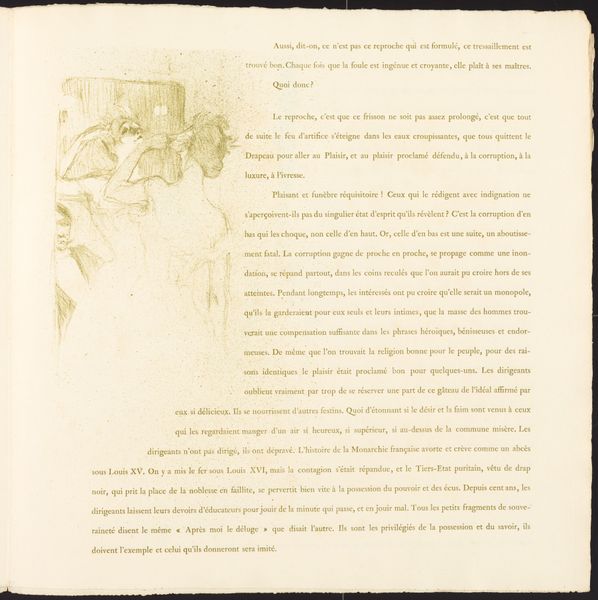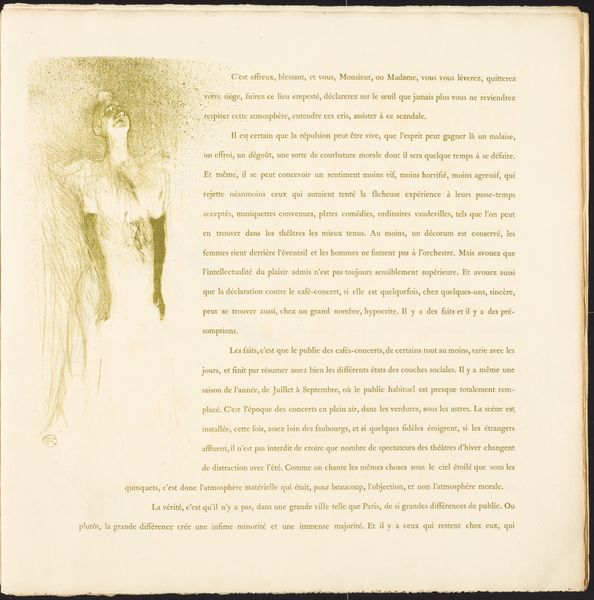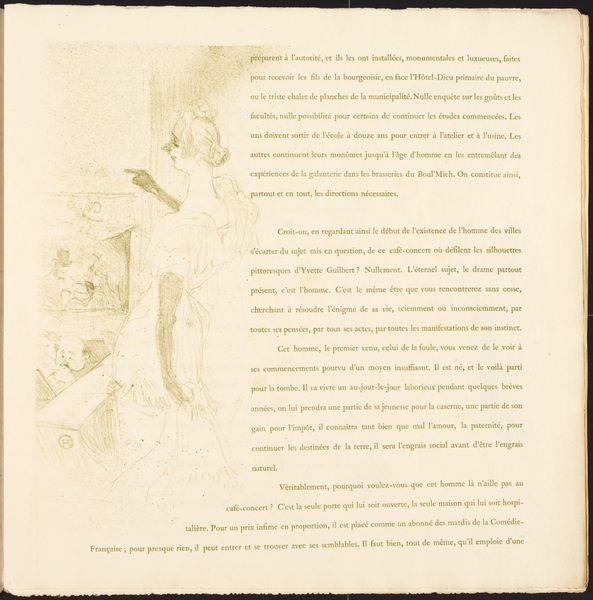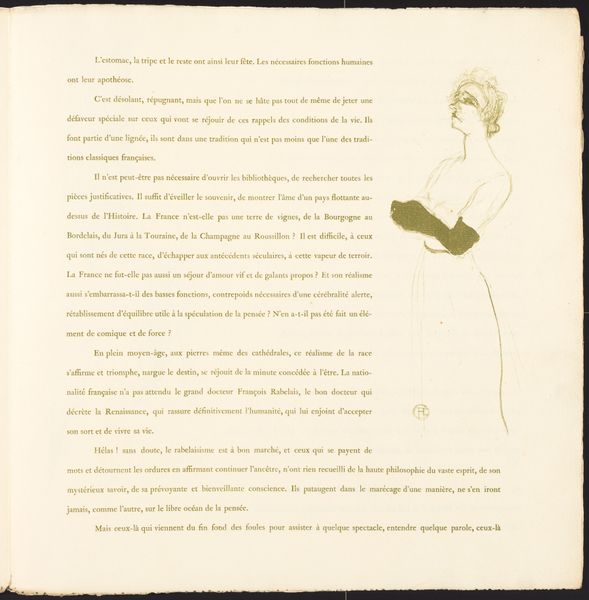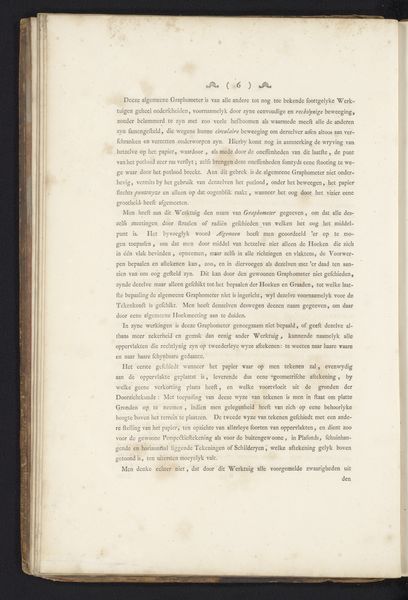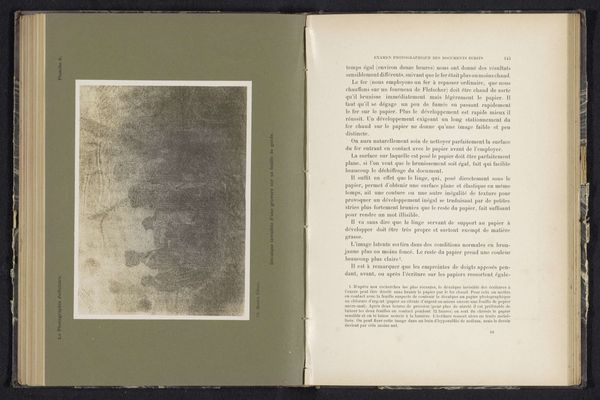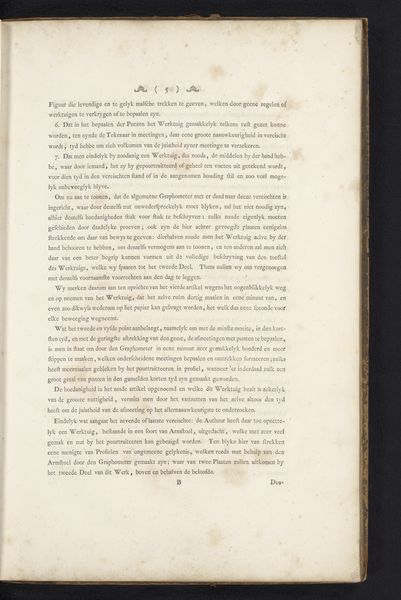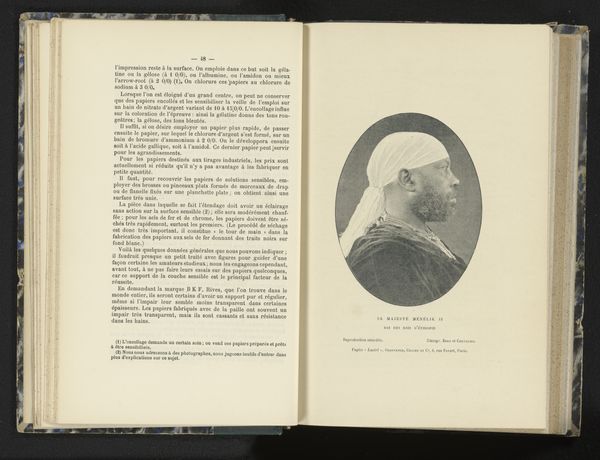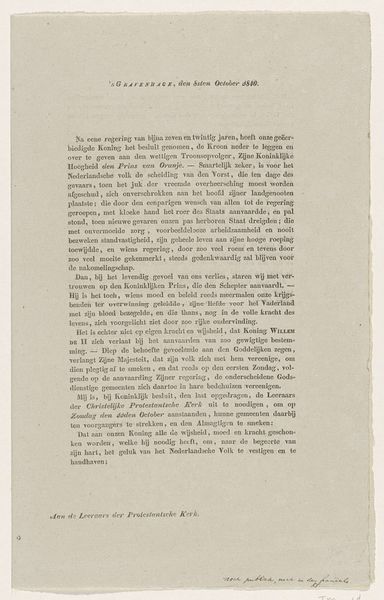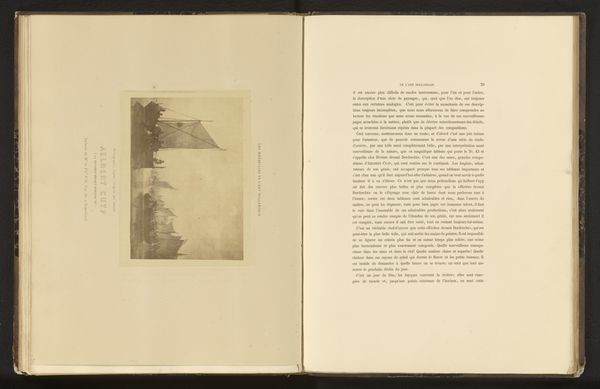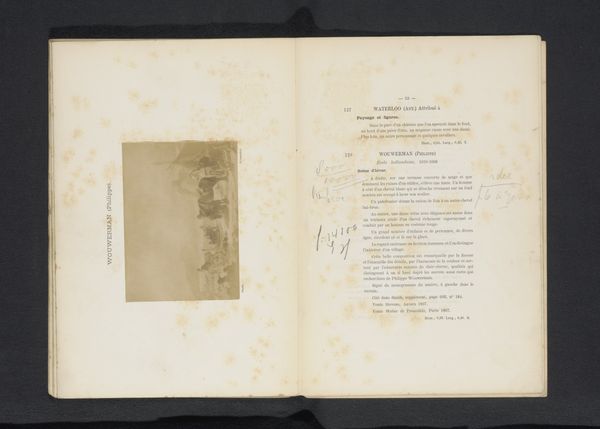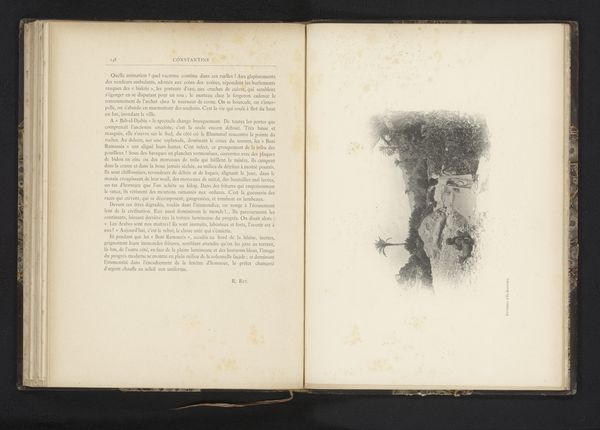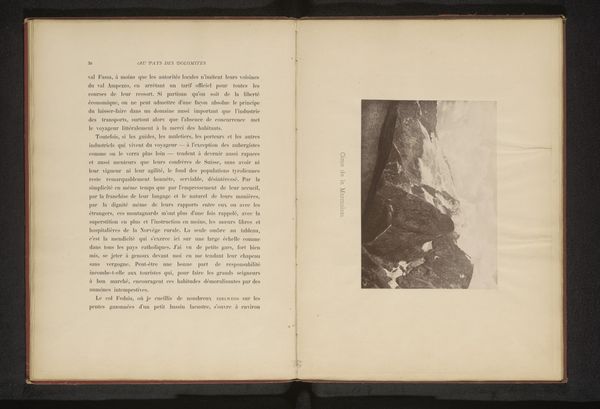
drawing, lithograph, print, paper, ink, poster
#
portrait
#
drawing
#
art-nouveau
#
lithograph
# print
#
figuration
#
paper
#
ink
#
line
#
symbolism
#
poster
Copyright: National Gallery of Art: CC0 1.0
Curator: We’re looking at "Yvette Guilbert," a lithograph and ink drawing on paper crafted by Henri de Toulouse-Lautrec in 1894. Editor: My first impression is of fragility and transience. The faint lines and washed-out tones give the impression of a fading memory, almost ghost-like on the page. Curator: Indeed. Toulouse-Lautrec was deeply embedded within the Parisian subcultures of Montmartre, and Guilbert was a famous cabaret singer. This work transcends a simple portrait, acting as a potent statement about celebrity, performance, and the male gaze. Consider, too, the object itself: a mass-produced print meant for consumption. Editor: Absolutely. The image also pulls from Symbolist aesthetics, creating a visual language laden with potential for multi-layered interpretations. There is an undeniable sense of melancholy conveyed through the slightly downward gaze, the drooping features. Is she burdened by the performance, weighed down by expectations? Curator: It's fascinating to consider how this work participates in broader discourses of gender, class, and representation during the Fin de Siècle. Think about Guilbert's agency: she was a modern woman navigating complex social and artistic spheres. Yet, how does Toulouse-Lautrec, as a privileged male artist, impact our perception of her? Editor: And we shouldn't ignore the performative aspect of her chosen profession as an entertainer and interpreter of song and verse, made memorable with unique long black gloves, her signature costume element that further heightens her persona. The flowing lines evoke an ethereal feeling that enhances the enigmatic elements of the character she portrays. Curator: Those very same performative elements point us towards discussions on the construction of identity within burgeoning mass media culture. By capturing her likeness, Lautrec was, in effect, codifying and circulating her image, influencing public perception, for his and for posterity’s, personal and professional reasons. Editor: It is also fascinating how Lautrec's simplification of form, almost parodic rendering, hints at underlying psychological tensions present. The figure seems both present and absent, real but distant, as if guarding herself from intrusion. The minimal, linear contour evokes subtle movement, an essence barely contained, all about performance, a study of emotion. Curator: Considering both Lautrec's and Guilbert’s roles within a society undergoing massive changes reveals many social commentaries about artistic fame and culture, offering avenues for conversations about authenticity, appropriation, and spectacle. Editor: Exactly. And contemplating the visual symbols offers unique glimpses into understanding how this image becomes an evocative fragment, inviting our interpretations in an ongoing interplay.
Comments
No comments
Be the first to comment and join the conversation on the ultimate creative platform.
